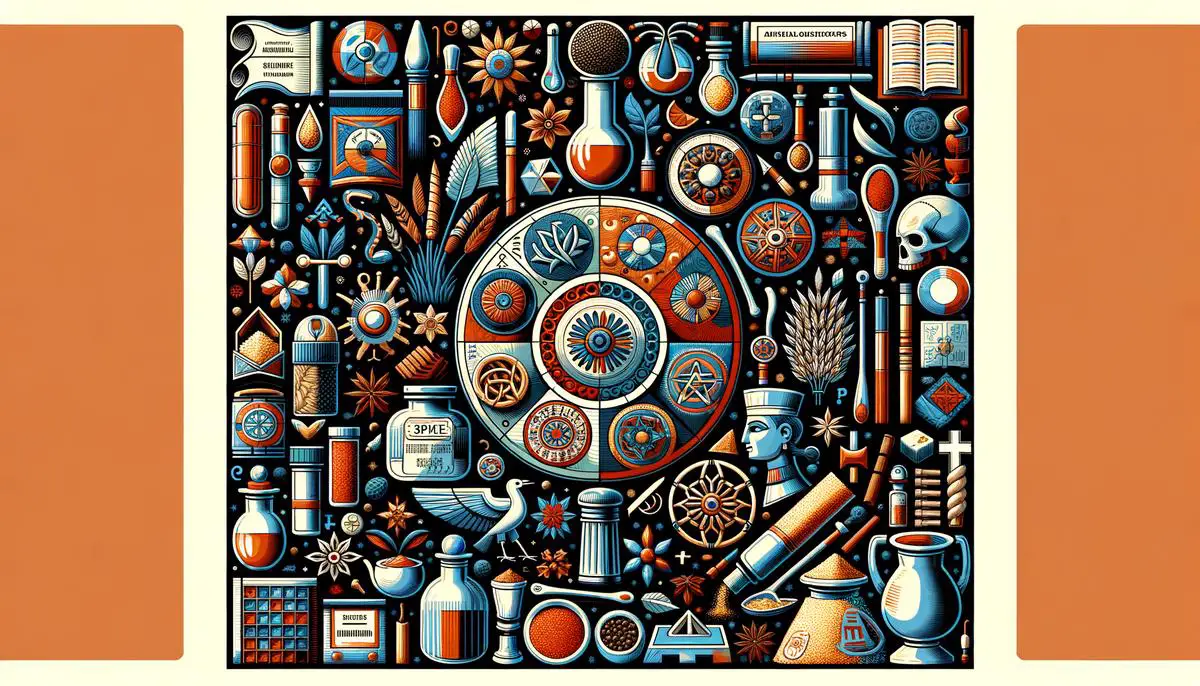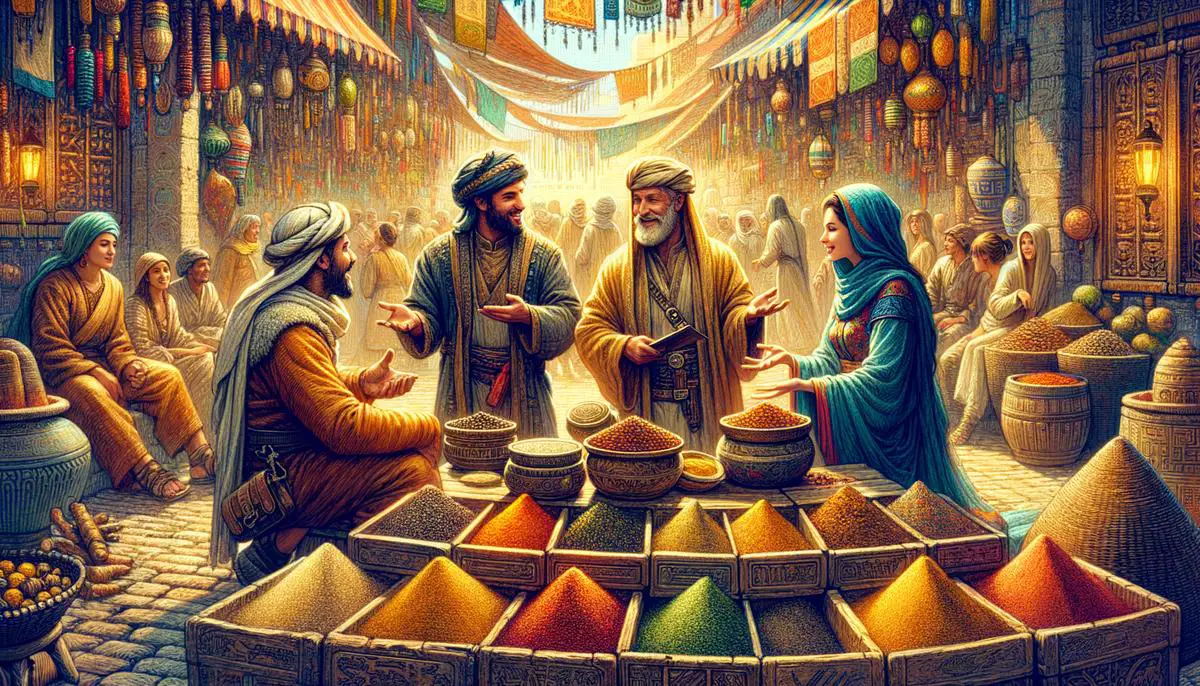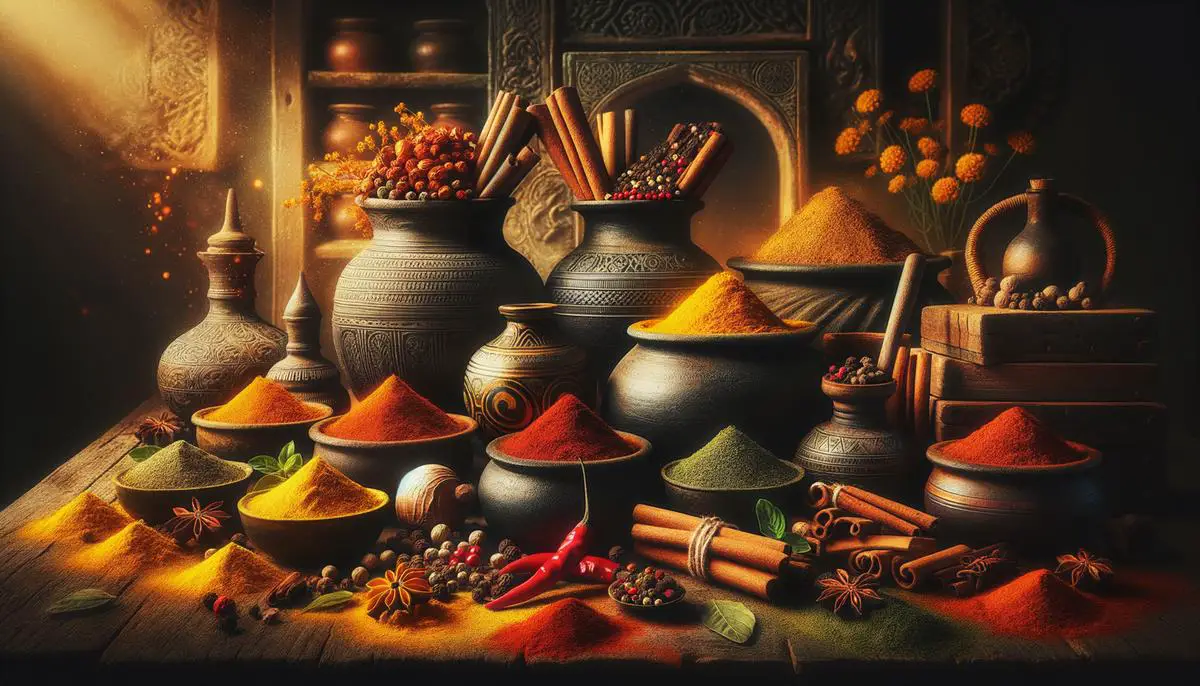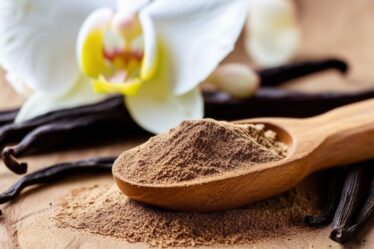
Historical Origins of Spices
The journey into the heart of flavors, particularly spices, takes us back to ancient civilizations who first discovered these culinary treasures. These cultures were not just about survival; they were about creating art on a plate, much like Chef Alain Passard does with vegetables at Arpège. Imagine for a moment, standing in the ancient markets, surrounded by the intoxicating aromas of the first spices ever used in cooking. It’s a legacy that transformed meals from mere sustenance into a celebration of life.
The initial curtain call of spices onto the world stage can be credited to the civilizations of the ancient Egyptians, Indians, Chinese, and Sumerians. These pioneers of gastronomy unlocked the flavors hidden in nature’s bounty, introducing the culinary world to a symphony of tastes that we continue to enjoy and explore today.
Let’s set the stage with ancient Egypt, around 2000 BCE. Here, spices weren’t just for food; they were integral to religious rites, embalming practices, and cosmetics. Imagine the reverence for cinnamon and cumin, not just on the tongue but as a bridge between the earthly and the divine.
Journeying to ancient India, we uncover the roots of Ayurveda, where spices such as turmeric and ginger weren’t merely flavor enhancers but were revered for their healing properties. The Indian subcontinent was, and still is, a cornucopia of spices, leading to the creation of dishes that dance on the palate and soothe the spirit.
Next, delve into ancient China, a civilization that mastered the art of balance in cuisine. The Chinese were early adopters of star anise, clove, and cinnamon, harmonizing flavors to create dishes that were as much about nourishment as they were about philosophy. They understood that food could be medicine long before the concept was popularized in the West.
Lastly, we have the Sumerians of Mesopotamia, who were among the first to document recipes on tablets, some of which included spices. These ancient people were not just consumers of spices but were pivotal in the spice trade that connected the world.
Each of these civilizations contributed to the rich tapestry of culinary history, reminding us that the quest for flavor is as old as humanity itself. They showed us that cooking is not just about feeding the body but about nurturing the soul, much like a meticulously crafted dish at Arpège.
Price paid for this historical feast? A willingness to travel through time with each bite or sniff of a spice. The value? Immeasurable. Through the lens of these ancient culinary artists, we come to understand that the pursuit of flavor has always been a fundamental part of the human experience, connecting us across time and cultures.
Date of discovery: Millennia ago, but the journey continues with every meal we prepare and every spice we explore.
Would I revisit these ancient civilizations if given a time machine? Absolutely, but until then, I’ll continue to celebrate their legacy, one spice-infused dish at a time.

The Spice Trade Routes
The spice trade didn’t merely alter the flavor of our foods; it rewrote the map of the world. This global pursuit of culinary enhancement kicked into high gear during the Age of Exploration, a period marked by navigational advancements and a feverish desire to discover new lands, riches, and, critically, the sources of coveted spices.
Europeans, consumed by a passion for spices like black pepper, cinnamon, and cloves, embarked on ambitious voyages, leading to the accidental discovery of the New World by Christopher Columbus. Initially aiming for the Spice Islands (modern-day Maluku Islands in Indonesia), Columbus stumbled upon America, setting the stage for centuries of exploration and colonization. The quest for spices didn’t just expand geographical knowledge but played a pivotal role in establishing and enriching the naval powers of the time, particularly Portugal and Spain, later joined by the Dutch, French, and British Empires.
Economic transformations unfolded as spices, once exclusive to the wealthy elite for their preservative and flavoring properties, became a currency of their own. The value of spices was astronomical, often exceeding gold. This value wasn’t just in their culinary use but in their perceived medicinal qualities, making them objects of intense trade rivalry. Cities like Venice thrived as pivotal nodes in the spice trade, enjoying unprecedented wealth and political power by controlling spice imports from the East to Europe, until the direct sea route to India was discovered by Vasco da Gama in 1498, shifting the center of power.
The monopoly on the spice trade also led to the first instances of globalization and the fusion of cultures. As spices traveled, they carried with them ideas, technologies, and cuisines, blending the East and West in unforeseen ways. The introduction of spices to European dishes transformed them, making them richer and more diverse. Conversely, the West brought to the East new food crops, such as chili peppers to India, which have since become staples in local cuisines.
Furthermore, the trade routes established for spices laid the groundwork for the modern global trading system. The Dutch East India Company and the British East India Company, formed to monopolize the trade of spices from the East Indies, became the world’s first multinational corporations, wielding enormous influence over global trade practices, economics, and even colonized nations’ governance.
In an ironic twist, the fervent search for spices, which initially bolstered European economies and expanded their empires, also sowed the early seeds of colonial resistance. The oppressive practices enforced by colonizing powers to control spice production and trade incited local uprisings and wars of independence, reshaping territories and national borders.
In sum, the spice trade was not just about adding flavor to food. It was a catalytic force for exploration, sparking the Age of Discovery, reshaping global economies, politics, and cultures. The legacy of the spice trade is a testament to humanity’s unending quest for exploration, understanding, and connection, driven by something as simple yet profound as the taste and aroma of spices.

Cultural Significance and Uses of Spices
Spices continue to weave their way through our culinary traditions and healing practices, shaping both with a legacy that stretches back millennia. Today, the vibrancy and variety they bring to dishes worldwide can’t be understated, nor can their continued contribution to natural medicine, reflecting a deep-rooted history that still sparks passion and innovation in kitchens and holistic health circles alike.
In the culinary world, chefs and home cooks alike harness the transformative power of spices to elevate simple ingredients to spectacular. Take turmeric, for example, a spice once primarily recognized in the West for its role in curry powders. It’s now celebrated for its anti-inflammatory properties and is being creatively incorporated into everything from golden milk lattes to vibrant smoothies, showcasing its versatility far beyond traditional Indian dishes.
Similarly, cinnamon, known for its warm, sweet properties in baking, continues to find new life in savory dishes, adding depth to stews and marinades—a practice that mirrors ancient culinary traditions, yet feels entirely modern. This spice, significant in ancient medicine for its purported abilities to aid digestion and regulate blood sugar, illustrates the blurred lines between food and medicine that have existed for centuries and remain relevant today.
The renaissance of fermentation in contemporary cuisine also highlights the enduring influence of spices. As chefs explore the ancient practice of fermentation to develop flavors and preserve food, spices play a crucial role. Korean kimchi, for instance, relies heavily on the heat of red pepper flakes, while European sauerkraut may be enhanced with juniper berries and caraway, connecting our modern culinary explorations directly to the past.
In the sphere of natural healing, the dialogue around spices has also gained momentum. The modern wellness industry, while heavily leaning on innovation, continually looks back to ancient knowledge for inspiration. Spices like ginger and garlic are not only staples in the kitchen but are also lauded for their health benefits, from boosting immunity to battling inflammation. This dual-purpose use of spices, both as flavor enhancers and healing agents, underscores a holistic approach to wellness that is deeply entrenched in history.
Moreover, the community of global food enthusiasts, chefs, and nutritionists are embracing a fusion of culinary traditions, where spices play a pivotal role in the cross-pollination of flavors and techniques. This fusion not only enriches our palates but also fosters a greater understanding and appreciation of different cultures, demonstrating that spices are as much a bridge between peoples as they are between the past and the present.
The exploration of traditional spices in contemporary dishes and health practices is part of a larger narrative of heritage and innovation. It is a testament to the enduring allure of these ancient treasures that continue to shape and inspire our culinary landscapes and healing philosophies. As we delve deeper into the science behind the benefits of spices, we not only validate ancient wisdom but also open up new frontiers for how these potent flavors can enhance our lives.
From the bustling markets of ancient trade routes to the modern kitchen and beyond, spices have, and continue to be, a source of magic and mystery, healing, and delight. Their journey across centuries—adapting, influencing, and merging culinary and medicinal traditions—demonstrates a vibrant tapestry of human history, linked by the universal language of flavor and the pursuit of well-being.




